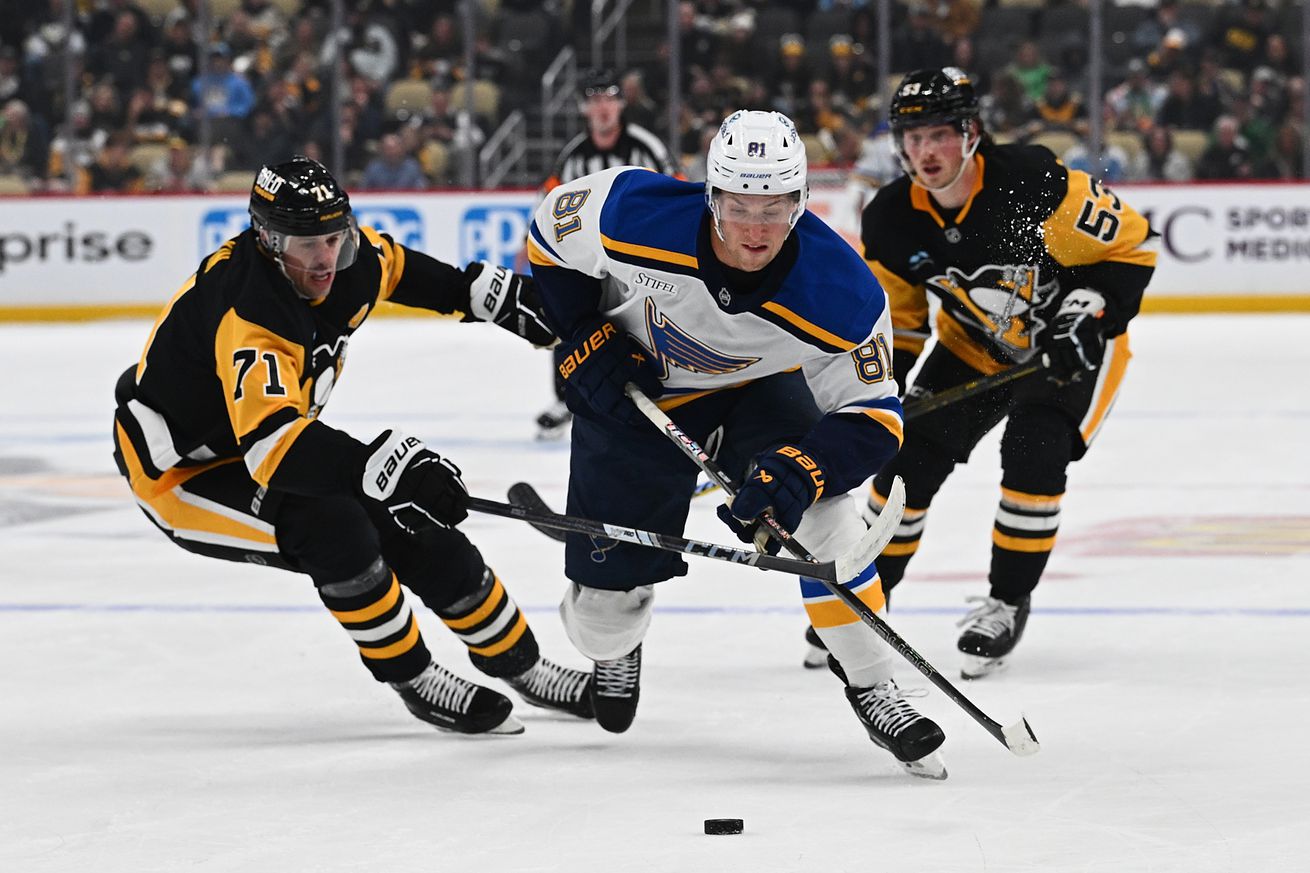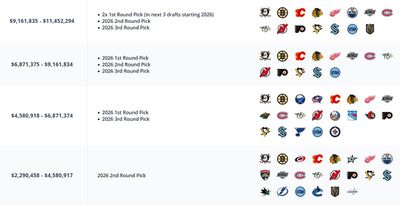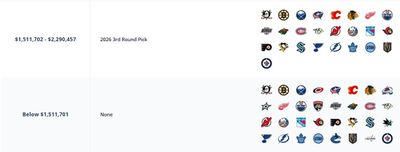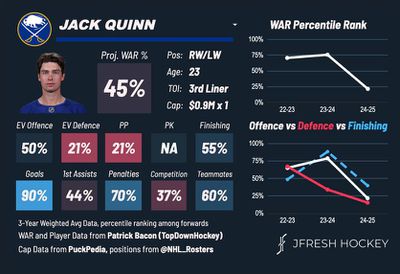
Can the Pens poach talent through restricted free agency?
The St. Louis Blues upended the status quo of how NHL teams acquire talent last summer by signing two offer sheets with Edmonton Oilers players. The cap strapped Oilers reluctantly agreed to take the draft pick compensation rather than match a $4.58 million cap hit for restricted free agent defenseman Philip Broberg and a $2.29 million contract for forward Dylan Holloway.
NHL teams have historically been reluctant to poach one another’s “restricted” free agents, putting emphasis on the first word of the term to the extreme. Offer sheets have been fun in concept, but rarely put into practice in the real world. Only two players — Dustin Penner in 2007 and Jesper Kotkaniemi in 2021 — changed teams via the practice in the whole salary cap era from 2005 to now. Well, prior to STL’s big splash last year, that is.
The results for the Blues have been tremendous. In exchange for second and third round draft picks, projected as of now to be 52nd and 86th overall in this upcoming draft, STL added a 23-year old defenseman who has blossomed into top-four caliber (eight goals, 19 assists while playing 20:27 per game) AND a 23-year old forward who has broken out even further with 62 points into a front-line player.
Many are hoping and expecting that the Blues’ success will encourage other teams to set aside past norms. It wasn’t too long ago when NHL general managers literally challenged one another to fist fights over targeting each other’s RFA, which shows how far things have come in not that long of a time for decision makers to consider offer sheets a realistic way to acquire talent.
Offer sheet rules refreshers
Before we begin, some gentle, general reminders:
- In order to make an offer sheet, teams must have their own draft picks available in the following year (so for free agency 2025 it’s draft picks in 2026)
- An offer sheet can’t be unilaterally handed out by a team, the player has say in the matter by getting to accept or decline the offer from the new team
- The initial team is given the option to either match the offer sheet and keep the player or decline and get draft pick(s) in return
- The cap hit determines the compensation of the offer sheet
Below are last year’s compensation levels, via PuckPedia’s offer sheet tracker. It’s important to keep in mind that these numbers will be ticking up along with the salary cap for next year. Since the Penguins carry all of their relevant 2026 draft picks, they are free for whatever they want in this area, as you can see with their logo appearing at every category on the right.


The upper limit of the salary cap is set to raise from $88 million to an expected $95.5 million for 2025-26. For our math, we will apply that 8.5% raise similarly and unofficially to the project top-end of the second round compensation at $4.971m (up from the $4.58m from last year and as seen in the detail above).
Targets and the right strategy
Logic dictates that a building team like the Penguins should not part with a 2026 first round draft pick, so we can focus away from the levels that require giving up a first round pick and move down a rung to the mid-level free agents. That fits what the Blues did when they targeted their two Edmonton players.
Who could fit the bill? Sportsnet listed their top 12 impending RFA’s a couple weeks ago, but none of the top RFAs are with the same team to present an easy target the way the Oilers made themselves. That doesn’t make for an exact fit for the Blues situation last year, but other opportunities persist.
The juiciest target might seem like redemption for Kyle Dubas being as Toronto could be ripe for the RFA picking. PuckPedia projects the Maple Leafs to have $27 million in cap space for 2025-26, but contract extensions for unrestricted free agents Mitch Marner and John Tavares figures to eat much of that space. Toronto has Matthew Knies, Nick Robertson and Pontus Holmberg as RFA’s if they can’t extend them prior to July 1.
The thought of Knies being plucked away in the Pens’ offer sheet range for just under $5 million is pushing it, probably a little too far. Knies already has 25 goals and 49 points this season and has the opportunity to put the shine on himself with a big post-season. He appears to be player in position to command more money.
To best follow the Blues’ example, one can’t be looking to poach those types like Knies anyways. Young players that are already performing like first liners is like “skating to where the puck is”, as the famous saying goes. The magic and genius about what St. Louis did with their offer sheets was that they “skated to where the puck is going to be” and took chances on projecting to value what players could become in bigger roles and paid them before they proved it. There can be risk in that strategy if the scouting is off, but we also see the reward available when the bet hits.
Now that we’ve established that Knies is out of a reasonable range, the same train of thought applies for Buffalo’s JJ Peterka, Winnipeg’s Gabriel Vilardi and even New York’s K’Andre Miller (who carries a $4.6m qualifying offer). These players are already too good to be plucked away in the second round pick territory, the focus has to shift to better fits.
Turn to Buffalo..
Buffalo pops out as an interesting potential team to target. The Sabres have Peterka, Bowen Byram, Ryan McLeod and Jack Quinn all coming up as notable RFAs. Buffalo has a projected $22 million in cap space and no big UFAs left to eat into that, which seems favorable to them keeping their young players upon first glance.
Then again, their business practices have not so straight-forward as of late. Buffalo bought out Jeff Skinner and didn’t replace him nor didn’t spend to the cap limit this season, sitting at about $81m in player expenses this year per PuckPedia. Their stop-and-go management strategies makes them worth targeting.
Buffalo doesn’t have any UFA’s on their roster because they already committed a total of $8.75 million in extensions to veterans Jason Zucker and Jordan Greenway. Whether they’ve realized it yet or not, these moves have served to paint themselves into a corner to become vulnerable to offer sheets. That’s perhaps almost blindingly so considering that Sportsnet article linked above put Peterka commanding $7+ million to sign long-term and then the Sabres have Byram plus McLeod (on his way to a 50+ point season this year) both looking at significant salaries that will be eating up much of the cap space the Sabres have — even making the grand assumption that the smaller market team intends to spend to the cap’s upper limit next season.
Suddenly what seemed like a team with plenty of space now can be considered somewhat vulnerable…
And now, the target

Jack Quinn is the figure that fits the mold of what being aggressive in offer sheets could look like for the Penguins. Quinn’s chart from the past looks impressive but is misleading since the 2023-24 sample was only 27 games due to injury. Add in a down season this year in 2024-25 and while the natural reaction might be one of concern, having a down year is what fits Quinn neatly in a pocket where, still just 23 years old, he becomes that mid-range offer sheet candidate.
Quinn 14 goals and 21 assists this season, he is the mold of a Holloway-type of player to bet on a year early. There are some obvious parallels between the two; both Quinn and Holloway hit RFA at a similar age (23). Both were former first round picks, both are plus skaters who have showcased enough talent to believe there could be more output available in the right circumstance. The Penguins would obviously have to buy in big time to believe Quinn was worth the pre-investment, but the cards are starting to align to some degree.
Offering Quinn $2.485 million (the max projected 2025-26 third round pick amount) would put Buffalo in an uncomfortable situation where they would be required to almost 3x his salary from his current $863k cap hit to stick with a player on a meandering career path that might be on the verge of unnecessary considering the team has younger forwards on in Jiri Kulich, Zach Benson and Isak Rosen that could replace or pass Quinn up in the near future in the first place. All three of those options would make a combined salary about equal of that proposed offer sheet for Quinn, which also figures to factor into considerations.
Going up a notch and making it a $3.5 or $4 million offer requires being willing to give up a second round pick, but it figures to push the envelope to the point where Buffalo almost certainly would have no choice in the matter. Given what that would do to their cap structure after signing Zucker+Greenway and considering Quinn’s worth/role with them, that equation tips way against keeping Quinn.
Granted, such a move risks overpayment by the Penguins — because there’s no way around the fact paying Quinn $2.4 – $4 million makes for a vast overpay on signing day. Such is the cost of doing business in attempting for a successful offer sheet ploy, if it’s not a painfully high amount of money then the initial team has too much incentive to match. Pittsburgh might gamble on the third round tender amount but the statement would be made and the case would be open and shut if they really went for it. If you’re going to make an offer sheet splash, you really better make a big one for best results if it’s deemed to be the right player and situation. Go the whole hog, as another saying goes.
The glorious piece of the equation for Pittsburgh is that they currently possess three 2nd round picks in 2026 and two 3rd rounders. If they do intend to switch gears from asset collection into using their stockpile to acquire NHL-caliber talent then the offer sheet is out there as a possible avenue to accomplish that goal. It becomes a lot easier to sink a second or third round pick and cap space into a player like Jack Quinn when the team has an excess of those picks (and plenty of cap space) on hand.
And since the title of this is “potential offer sheet targets” and we only offered one name and dislike misleading headlines — how about a bonus of circling quickly back to Nick Robertson? Based on our unofficial math, there will be no draft compensation required for RFA contracts in the $1.6 million or less range. If Kyle Dubas wants to get salty without dumping a pick or making a major play, why not offer Robertson about $1.5 million to come to the Penguins? It might be a lower reward gambit, but considering Toronto’s cap crunch it would be difficult to imagine they would have the ability and maybe interest in giving Robertson about 2x of his current cap hit. Going for Robertson would give the Pens considerably less risk to grab a player for no return with the benefit of not making a costly overpay if it doesn’t work out.
It remains to be seen if the Pens will choose to get so aggressive and reach way out of their lane to go this route. Perhaps the time isn’t quite right or the supply of RFA’s doesn’t align as perfectly as it did for St. Louis last year. It’s encouraging enough that in this new, evolving NHL world that it has become realistic to venture outside of traditional norms for ways to improve. That strategy is becoming normalized, the draft picks are certainly there for the Pens, now Kyle Dubas and team just has to figure out how bold they want to be about trying to improve by signing another team’s free agent(s).